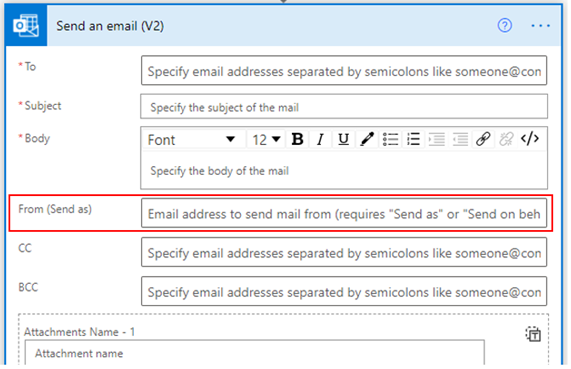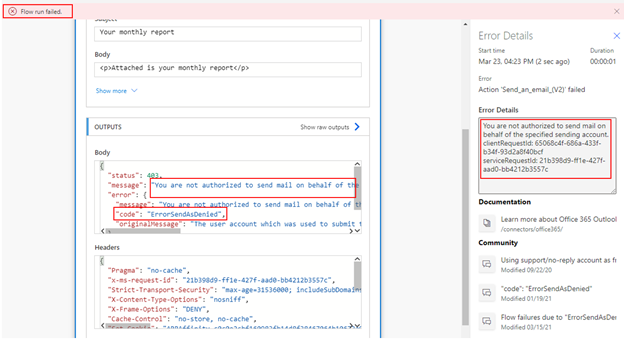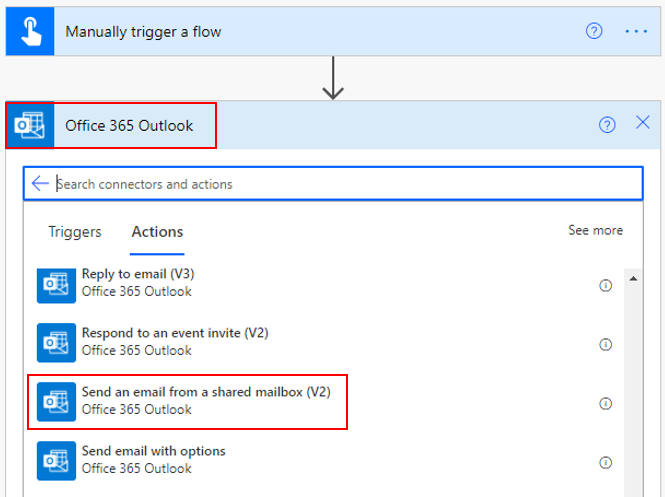Send on behalf of someone else
Microsoft Exchange is part of the Microsoft 365 suite that is used to provide email service. It's the same service as the one that runs the Office 365 Outlook connector in Power Automate.
All your email addresses are created in Exchange as mailbox accounts. If you want someone else to send an email on your behalf, then that person needs to be added to the Send As field of your mailbox, which will give that user the required permission.
After the person has the required permission, they can send emails on your behalf by using Power Automate flow.
The Send an email (V2) action in the Office 365 Outlook connector gives you the option to send an email on behalf of someone else. To find this feature, select Show advanced options.
In the From (Send as) field, you can add the name of the person's mailbox to which you have Send as access.
Note
If you are not added to the Send As field, then you don't have access to the user's mailbox and your flow will fail.
Shared mailbox
A shared mailbox is an Exchange mailbox that multiple people can use to read and send email messages. To access a shared mailbox, users must first be granted Send As or Full Access permissions to the mailbox from the Microsoft Admin Center.
After permissions have been granted, you can use the Send an email from a shared mailbox (V2) action.
In this action, you'll add the shared mailbox that you have access to in the Original Mailbox Address field. When this flow runs, the users will receive an email from the shared mailbox and from the maker of the flow (not you).
Do not reply mailbox
Do Not Reply mailboxes are email accounts that you can use to send email notifications with important information. The email body will clearly state that the recipient shouldn't reply to the message. This scenario is another example of where the shared mailbox process can be used.



